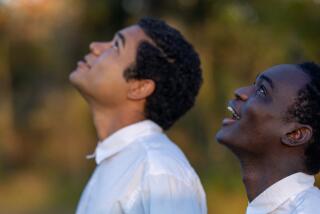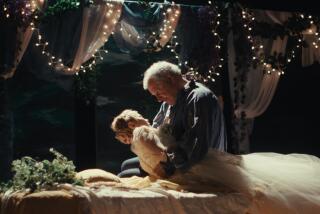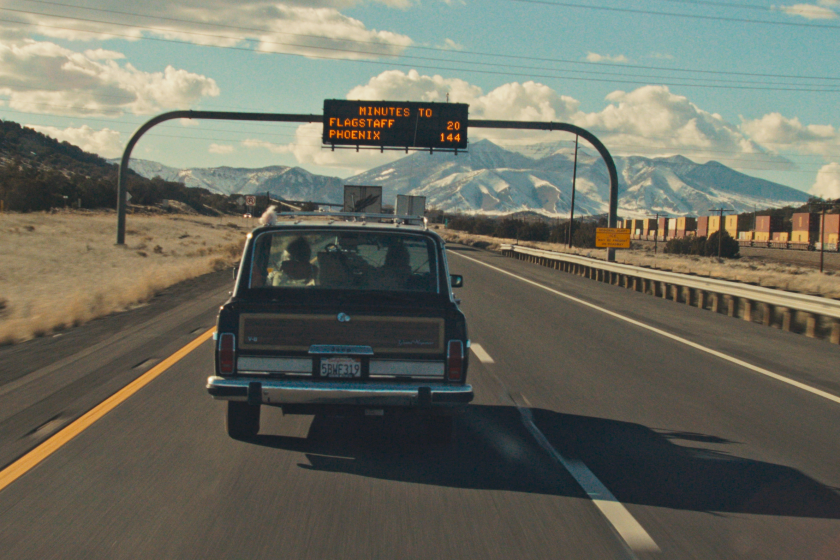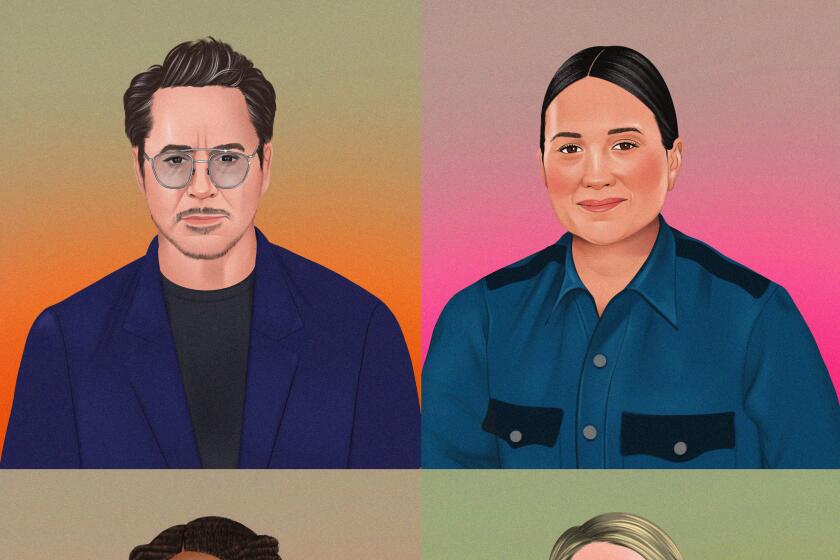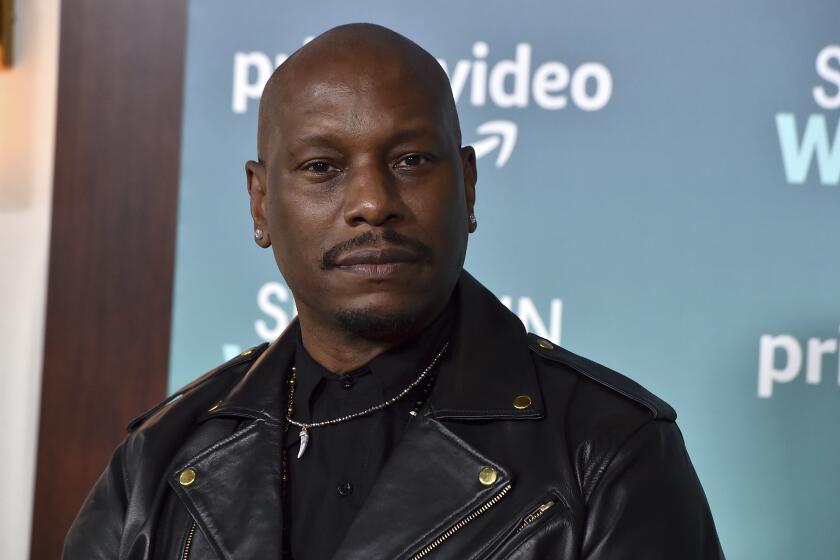For filmmakers this season, it’s hip to be square — at least on the screen
When director Robert Eggers set out to make his mind-bending 19th century drama “The Lighthouse,” starring Willem Dafoe and Robert Pattinson as a pair of lighthouse keepers descending into madness, he chose to shoot the film in black-and-white using an aspect ratio dating to the days of silent movies. Eggers knew that format, known in cinematography circles as 1.3:1 or 4:3, yields a square image that would give the film a distinct look and would help transport audiences back in time.
“It’s an old-timey aspect ratio, so on a very surface level, it helps make the movie look old,” said the filmmaker, who wrote the script with his brother Max Eggers. But there were other advantages too. “It’s also a better shape for photographing vertical objects, like a lighthouse tower, and it’s better for conveying cramped interiors and claustrophobia,” Eggers said. “Sometimes when Robert Pattinson and Willem Dafoe are in a two-shot, it is cramped. It’s tight, and I liked that.”
Although “The Lighthouse” might be the most obvious example of the 4:3 aspect ratio onscreen this awards season, other filmmakers are using the format to tell a range of visually inventive, globe-spanning tales—everything from powerful contemporary dramas to intimate character studies — rendered through an old-fashioned lens.
It’s not the first time in recent memory that the boxier aspect ratio has enjoyed a resurgence: Best picture winner “The Artist” (2011) was shot using the classic format; the following year, Pablo Larraín’s 1980s-set “No” earned an Academy Award nomination for foreign-language film. Wes Anderson’s 2014 “The Grand Budapest Hotel” featured three different aspect ratios, including the “Academy” ratio, or 1.375:1, which earned its name when the Academy of Motion Picture Arts & Sciences designated it as the standard for films shot between 1932 and 1952.
“Hotel” won four of the nine Oscars for which it was nominated, though it lost in the cinematography category to that year’s best picture winner, “Birdman or (The Unexpected Virtue of Ignorance).”
First-time feature director Melina León chose the 4:3 ratio for her 1980s-set Peruvian drama “Song Without a Name” (Canción sin nombre), about a poor young woman who turns to a journalist for help finding her infant after the baby is stolen. A festival favorite that premiered at Cannes and recently screened in Los Angeles at AFI Fest, the black-and-white film, which León co-wrote with novelist Michael J. White, is based on child-trafficking cases that León’s journalist father covered decades earlier.
“The aspect ratio owes to the fact that in the ’80s we had 4:3 TVs — it was another way to bring you to the ’80s,” León explained. “The main character, Georgina, is a very humble character, and I felt that 4:3 is a humble format. It doesn’t expand too much. It occupies just enough space in the world.”
Similarly, for this season’s “Lucy in the Sky,” director Noah Hawley and cinematographer Polly Morgan used the 4:3 aspect ratio to help viewers connect with the subjective experience of Natalie Portman’s Lucy Cola, an astronaut who struggles to readjust to life on Earth following a mission to space.
“With Lucy, [Noah] really wanted to use the [aspect ratio] to contrast her feeling of claustrophobia and the feeling of being trapped when returning to Earth and then also her feeling of freedom and the feeling of wonder when she was up in space — when she was just feeling part of her experience, we chose to frame that wide-screen,” Morgan said. “I really enjoyed the process of approaching the script in a very intellectual way.”
Eggers also worked closely with his “Lighthouse” cinematographer, Jarin Blaschke, to find the best ways to visually capture the mania that takes hold of Dafoe and Pattinson’s lighthouse keepers — and to highlight the stars’ best features: “It’s a fantastic aspect ratio for close-ups,” Eggers said. “Why would you want room on either side of the frame interfering with two of the greatest faces and four of the finest cheekbones that have ever been born?”
More to Read
Only good movies
Get the Indie Focus newsletter, Mark Olsen's weekly guide to the world of cinema.
You may occasionally receive promotional content from the Los Angeles Times.
